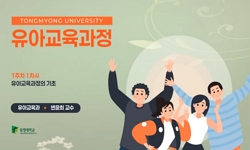This study aims to establish the direction of early childhood dance education. To achieve this, it examines the characteristics and objectives of the 2019 revised Nuri curriculum, a nationally standardized framework. Furthermore, the educa- tional val...
http://chineseinput.net/에서 pinyin(병음)방식으로 중국어를 변환할 수 있습니다.
변환된 중국어를 복사하여 사용하시면 됩니다.
- 中文 을 입력하시려면 zhongwen을 입력하시고 space를누르시면됩니다.
- 北京 을 입력하시려면 beijing을 입력하시고 space를 누르시면 됩니다.

개정 누리과정(2019)에 근거한 무용교육의 방향 = Directions for dance education based on the revised Nuri curriculum (2019)
한글로보기부가정보
다국어 초록 (Multilingual Abstract)
On the other hand, early childhood educators play a crucial role as creative and adaptable guides, encouragers, and facilitators, supporting children's spontaneous learning and maintaining their motivation to learn. Moving forward, it will be es- sential to further define teachers' beliefs about movement education and to refine effective teaching methods and strategies to ensure its successful implementation.
This study aims to establish the direction of early childhood dance education. To achieve this, it examines the characteristics and objectives of the 2019 revised Nuri curriculum, a nationally standardized framework. Furthermore, the educa- tional value and outcomes of early childhood dance education are explored. The goals of the revised Nuri curriculum are closely aligned with the educational val- ues inherent in dance education. Dance plays a vital role in helping young children experience, understand, and learn about the world. Through physical and sensory learning, children become aware of themselves and others, gaining a deeper un- derstanding of their surroundings. Early childhood dance education not only pro- motes physical health and cognitive development but also enhances psychological well-being and emotional maturity. Additionally, it fosters stronger social bonds by encouraging children to collaborate with partners or groups. To achieve these educational outcomes, it is essential to design movement education rooted in early childhood developmental principles, foster imagination through playful experi- ences, create an environment that nurtures children's creativity, and provide ap- propriate teaching materials and media.
On the other hand, early childhood educators play a crucial role as creative and adaptable guides, encouragers, and facilitators, supporting children's spontaneous learning and maintaining their motivation to learn. Moving forward, it will be es- sential to further define teachers' beliefs about movement education and to refine effective teaching methods and strategies to ensure its successful implementation.
동일학술지(권/호) 다른 논문
-
- 한국무용교육학회
- 한혜리
- 2024
- KCI등재
-
대구·경북 늘봄학교 초등학교 1학년 맞춤형 프로그램 사례 연구
- 한국무용교육학회
- 오레지나
- 2024
- KCI등재
-
- 한국무용교육학회
- 전지은
- 2024
- KCI등재
-
- 한국무용교육학회
- 최미란
- 2024
- KCI등재




 KCI
KCI KISS
KISS






